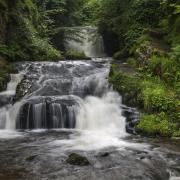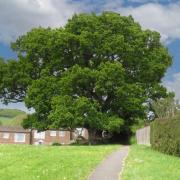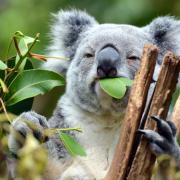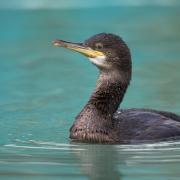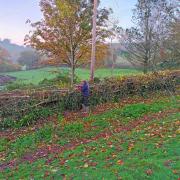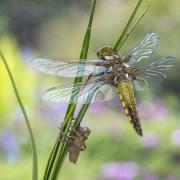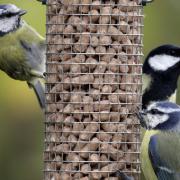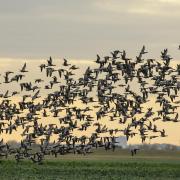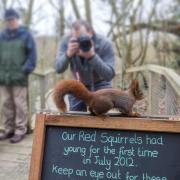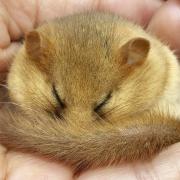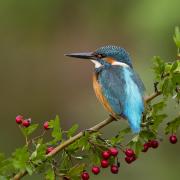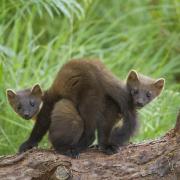Andrew Cooper recalls encounters and coincidences he experienced in the making of his new book about Dartmoor's people and places
Born within sight of Dartmoor my childhood weekends were often spent playing among rocky tors and paddling moorland streams. As a youngster I was enthralled by salmon leaping, buzzards wheeling and the creeping closure of carnivorous plants. No wonder Dartmoor influenced me to become a wildlife film maker. After thirty years spent producing BBC natural history documentaries worldwide, an opportunity arose to revisit my wild playground. It was a chance to stand waist deep in a frozen white wilderness, walk among drifts of native spring daffodils and revel in a story 280 million years in the making. The reason was to celebrate the 60th anniversary of Dartmoor National Park in a special book. And a timely reminder that this iconic granite island today ranks among the most inspiring wild and worked landscapes on the planet.
It was a chance to walk among drifts of native spring daffodils and revel in a story 280 million years in the making
Dartmoor changes spectacularly with the seasons but the people sharing a passion for the place impressed me just as much. We all view our surroundings from different directions. When combined they can paint a remarkable and sometimes surprising portrait. What followed was a world of songwriters and story tellers, painters and poachers, farmers, army commander and national park staff. Not forgetting a ranger who plays a pantomime dame, along with radio and television celebrities, each inspired by the dramatic scenery.
Of the many photographs in the book I have my own favourites, perhaps because they have another story to tell. The bluebell artist was pure coincidence. Although a stranger to me, he turned out to be a gifted retired doctor on a day out with a talented former colleague. Both were enjoying their painting. Not only was I unaware at the time that this famous site would later be generously given to the Devon Wildlife Trust, an organisation of which I am currently chair, but learnt from one doctor that we shared something in common. Imagine my surprise when I discovered his father had delivered my wife and he had been their family GP.
After a fresh fall of snow followed by freezing weather I ventured up onto the moors. In places Dartmoor roads were pristine white and dangerously difficult to define. Reaching Two Bridges the river Dart was partly covered in ice but still flowing. Carefully wading into the edge of the water produced an image of sun through trees that photographers crave. Luckily the water level was low. Conditions like this are rare even on Dartmoor and the early bird catches the picture without unwanted footprints or tyre marks.
Fire is a tool long used on Dartmoor to control rampant gorse growth. Known as ‘swaling’ the burning is carried out in late winter. Done every few years it clears the ground, stimulating grass and heather to grow for grazing. Done too often it can damage the heather moor. Sometimes fires spread wider than planned. Farmers are therefore a little wary of camera toting strangers. Spotting plumes of smoke one day I got as close as I dare, before asking over the crackle of flames if I could take some pictures. The fire wardens were unsure. Then a loud voice called my name as if hailing cattle across a wind blasted hill. The soot blackened face turned out to be an old school friend whom I had not seen in over 40 years.
Capturing wildlife on camera can be a fickle business. Weather, time and place all play their part. But on an early morning romp along the river bank in a Teign valley wood, my subject was nowhere to be seen. A rare butterfly was reputed to be found here and an expert was on hand to help. But even he struggled to find a specimen. Then I noticed a golden ringed dragonfly clinging to a freshly flowering rosebay willowherb. Experience is nothing without a large helping of luck.
On another beautiful afternoon, trekking to the top of Rippon Tor, I busied myself taking a series of photographs for a panorama looking towards Haytor. The camera was mounted on a tripod and I clicked away, turning slowly. A walker suddenly appeared in shot, seated on a rock. Fortuitous I thought, adding a human angle to the picture. However, he got up and moved. The result would have been two shots of the same person in different places. I politely asked if he minded sitting still long enough for me to get the images. Unfortunately he was a German tourist with only limited English and insisted on moving out of the way, apologising profusely. I thanked him when my task was complete. It turned out this was his first visit to England. A television film he had watched a few months earlier had inspired him to come to Devon. He looked incredulous when I introduced myself as the programme producer.
To order your copy of Dartmoor National Park by Andrew Cooper at the special offer of �7.95 with free P&P (UK only) please visit www.greenbooks.co.uk and enter voucher code DLDartmoor in the voucher box, or phone 0845 458 9910 quoting the code. All major credit cards accepted. Valid until 30 April 2012



